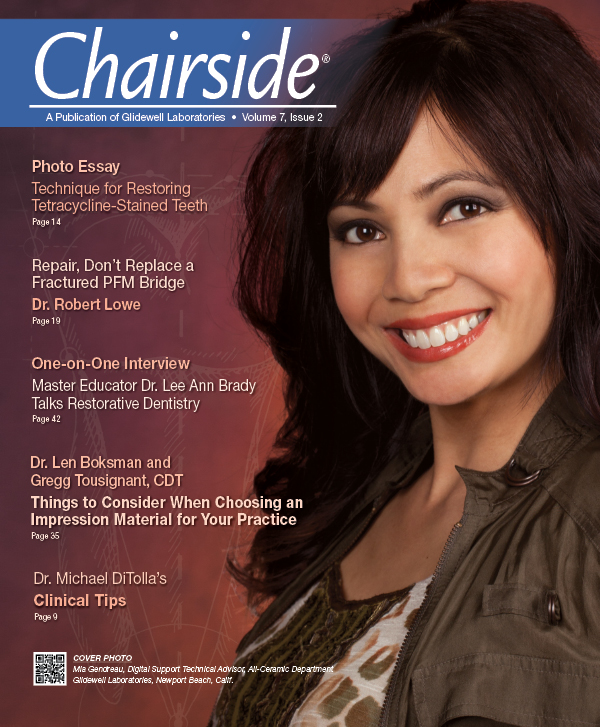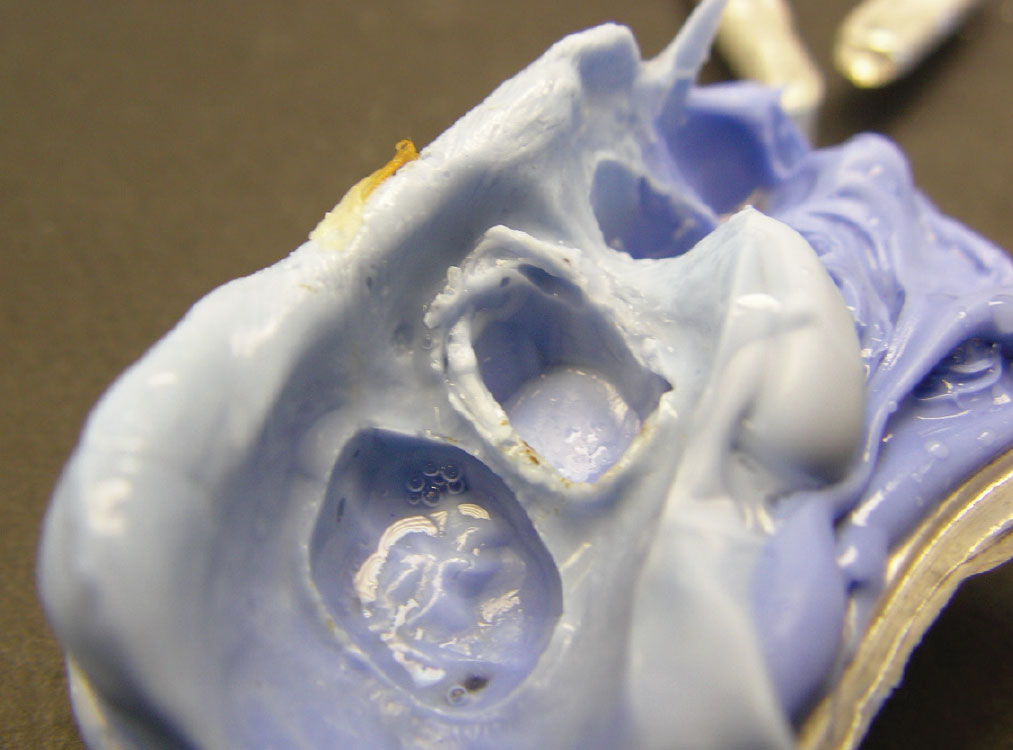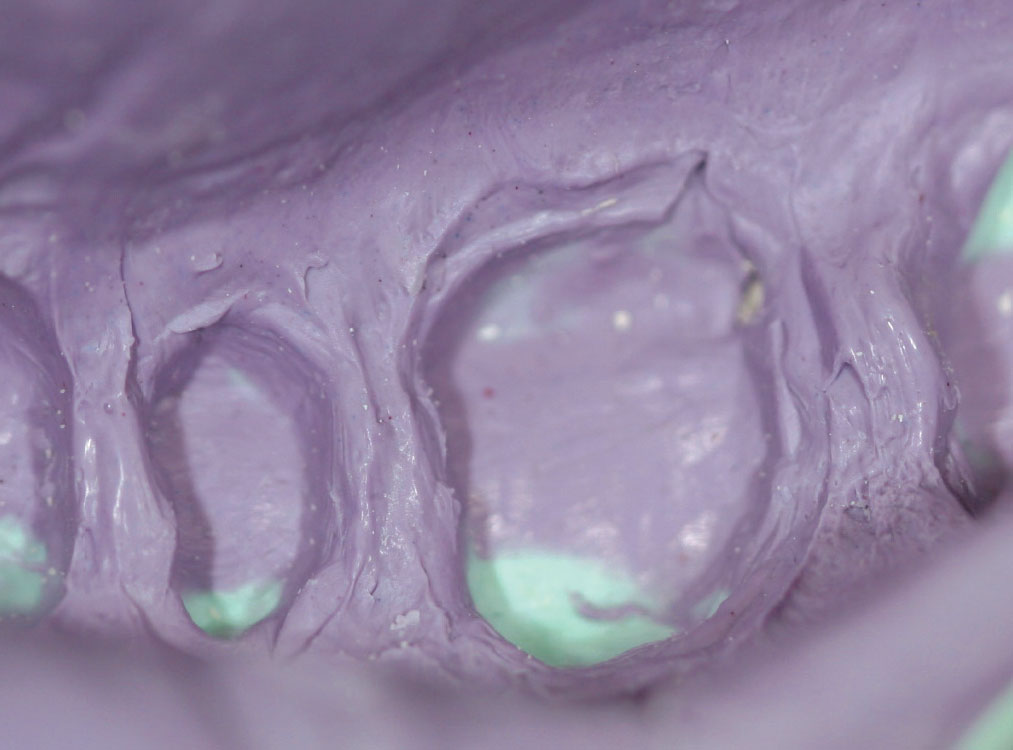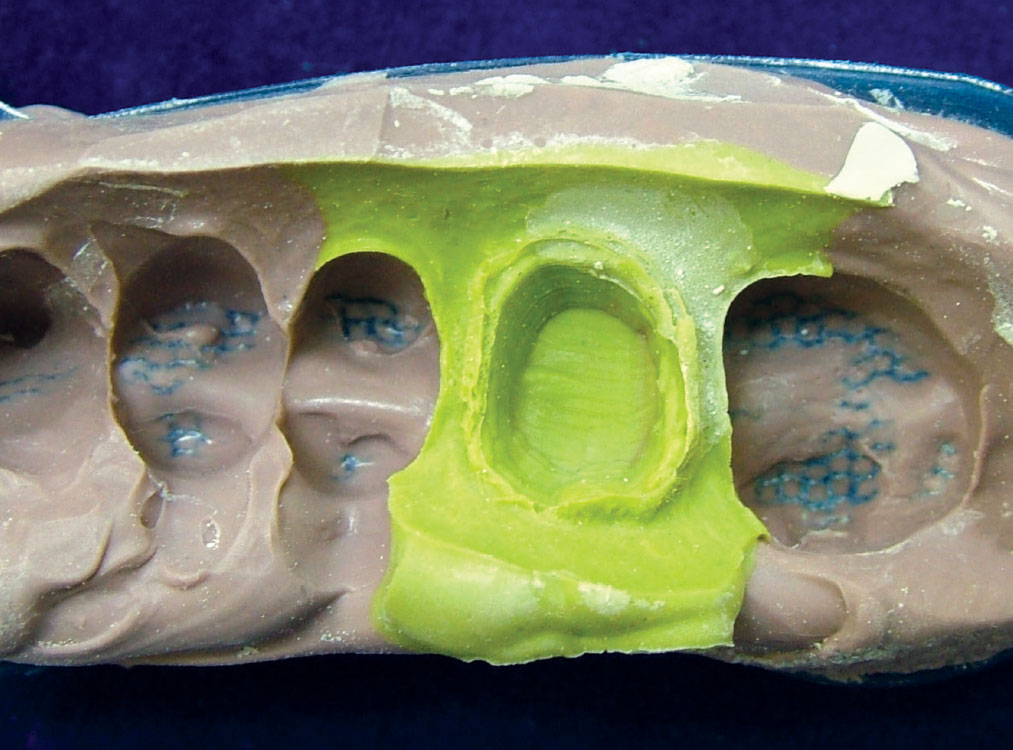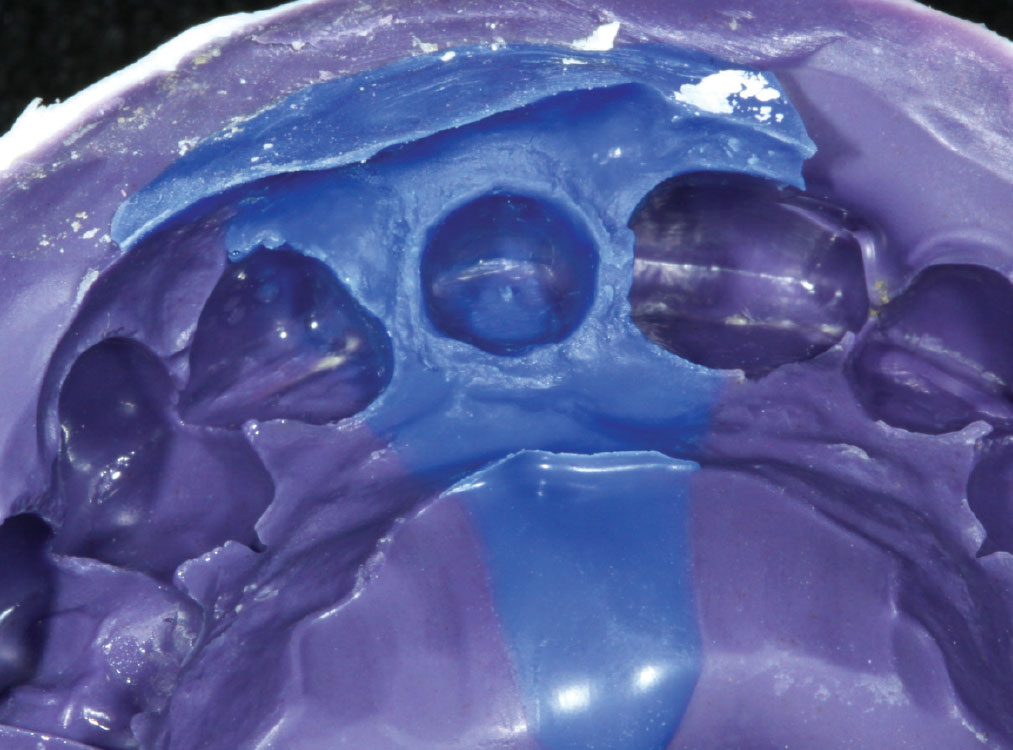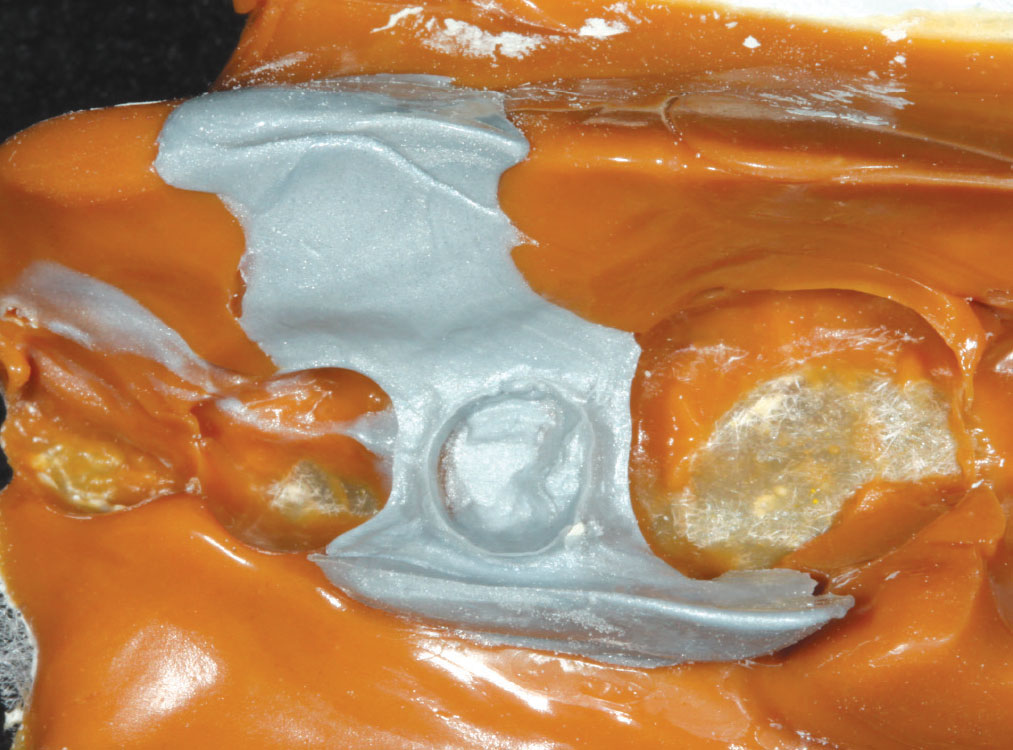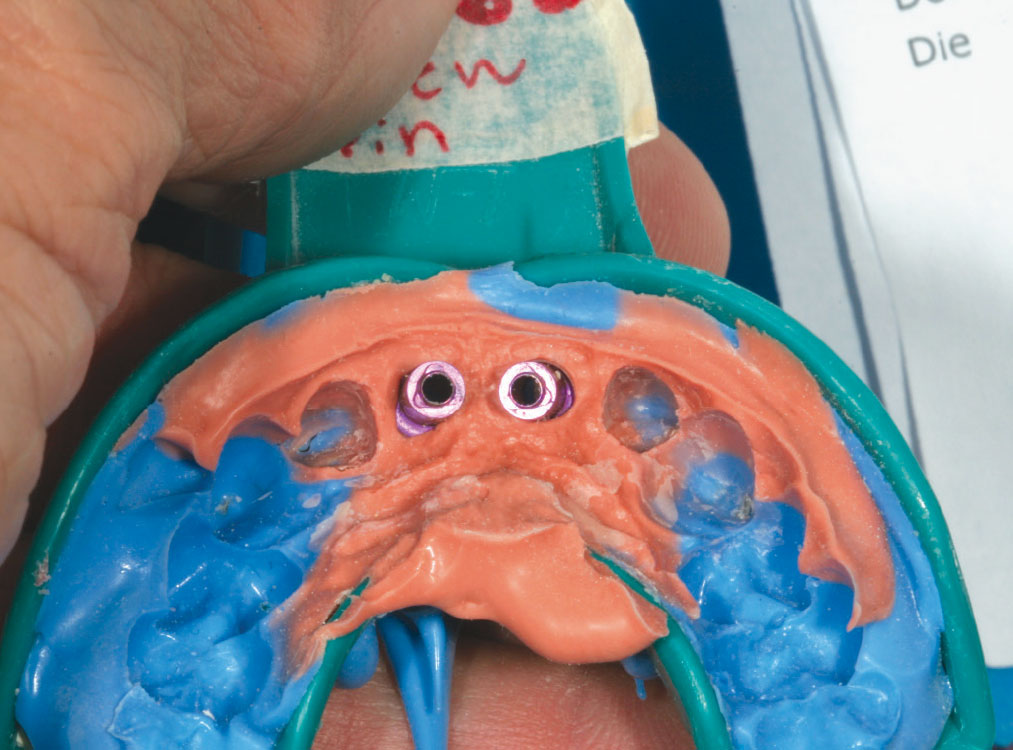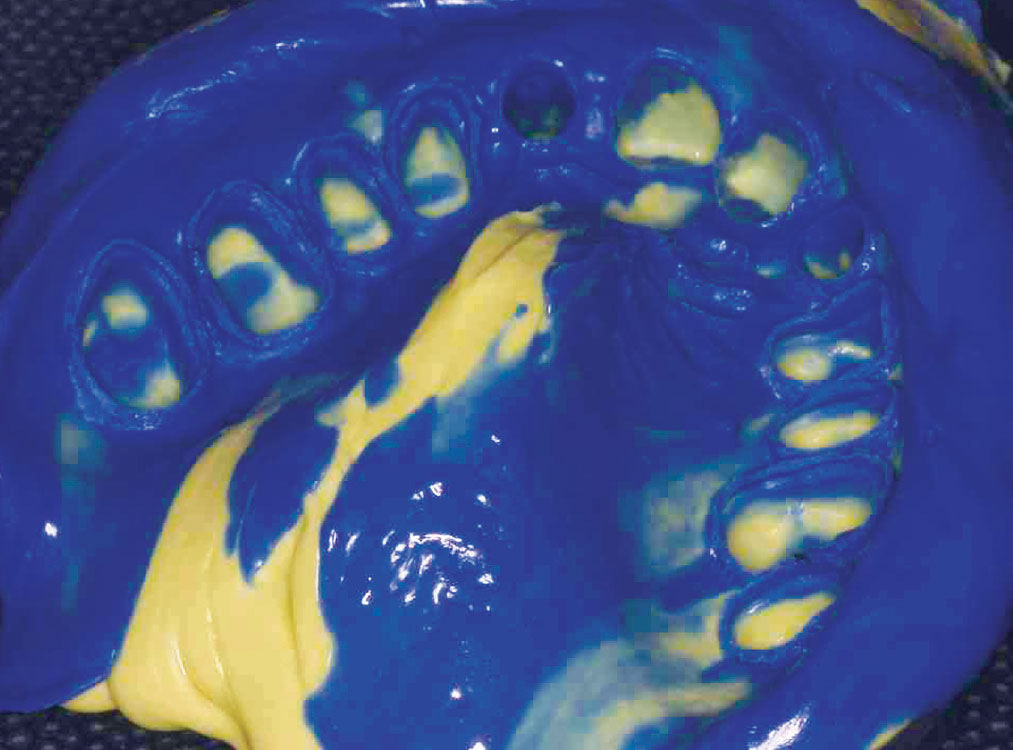Faster Is Not Always Better When It Comes to Impressioning

In practice, many dentists today want to use the fastest-setting dental products, the fastest curing lights, the fastest single-step adhesives and the fastest-setting impression materials. These faster products are desired for a number of reasons. Some clinicians want to save time in order to pack more patients into the day. Some want to make procedures faster and more comfortable for their patients. Some manufacturers even promote the so-called fast curing lights in ways to make you think you will save so much time you can take extra vacation days at the end of the year. One light manufacturer even claims that all you need is a one-second cure for a 4 mm layer of composite resin!
Freedman states that “faster setting impression materials are very advantageous in the efficient practice.”1 He then rightly qualifies this statement with “the underlying assumption is that faster setting in no way compromises the quality of the impression.” However, in a recent study of the quality of dental impressions for fixed partial dentures, 89% of the impressions had one or more detectable errors that would impact the final fit of the restorations; 51% had voids or tears at the finish line (Fig. 1); 40% had air bubbles at the finish line (Fig. 2); and 24% had flow problems (Fig. 3).2 Could there be any relationship to using fast-set impression materials?
When it comes to impression materials, the goal of a fast-set product is to limit the amount of time the impression is in the mouth, both for patient comfort and to limit the opportunity for the patient to move and distort the impression while it is setting.3 Although the concept is admirable, many clinicians experience drags, pulls (Fig. 4), inaccuracies (Fig. 5) and distortion in their impressions simply because they don’t understand how much working time they really have.
Terry, in his article on the impression process, gives us two definitions: “The setting time of impression materials is the total time from the start of the mix until the impression material has completely set and can be removed from the oral cavity without distortion, and the working time is measured from the start of the mix until the material can no longer be manipulated without introducing distortion or inaccuracy in the final impression.”4 These two processes are, of course, intimately related by the chemistry of the impression material. Many clinicians think they know the working time of their light-body and heavy-body impression materials, but we can pretty much guarantee that most do not! One of the disadvantages of PVS impression materials is their relatively short working time.5 If you think the working times of your light-body polyvinyl siloxanes are what is listed in the manufacturer’s instructions, then you, too, may not understand the true “intraoral” working times of your material.
In a recent study of the quality of dental impressions for fixed partial dentures, 89% of the
impressions had one or more detectable errors that would impact the final fit of the restorations.
By specification, the working times of impression materials are calculated at 23 degrees Celsius and at 50% relative humidity. Unfortunately, the oral cavity is much warmer and significantly wetter. In the ADA Professional Report on Elastomeric Impression Materials, the ADA found that times measured at 23 degrees Celsius were 66% to 77% longer than those measured at 35 degrees Celsius (intraoral temperature range).6 Some PVS impressioning materials such as Genie Ultra Hydrophilic (Sultan Healthcare Inc.; Hackensack, N.J.) and Correct Plus (Pentron Clinical Technologies LLC; Wallingford, Conn.), whose instructions claim working times of 135 and 90 seconds respectively, actually have less than 10 seconds working time intraorally.6 This makes it difficult for some, and impossible for others, to impress a single unit, let alone multiple units, and be able to deliver the tray prior to the light body setting.
So why is this relevant? In order to ensure a fluid blend between your light-body and heavy-body PVS impression materials, both materials must be fluid and unpolymerized at the time the tray is inserted. If not, this could lead to gaps or ledges between the different viscosities of material (Figs. 6, 7), which will lead to inaccuracies and high occlusion of your final restoration. We as practitioners also assume that upon insertion of our heavy body material, it will drive the light body into better adaptation to our preparation. Of course, this is not possible when the light body is already set (Fig. 8). This means that unless the light body is meticulously placed in the first instance, we cannot improve the impression by the hydraulics of the heavy body impression material.
Where are your impression materials stored? Are they stored in a wall cabinet with hot fluorescent lights underneath? Is your air conditioning on a timer? Do you turn the air conditioning down to save energy over the weekend?
To ensure a fluid blend between your light-body and heavy-body PVS impression materials, both materials must be fluid and unpolymerized at the time the tray is inserted.
If your air conditioning is on a timer or the temperature of your operatory or office is higher than 23 degrees Celsius over the weekend or during the day, you need to keep in mind that it takes eight hours for impression materials to acclimatize. On those hot humid summer days or nights, your impression materials can get significantly warmer than room temperature (70 degrees Celsius) and will not cool back down until eight hours after the air conditioning comes back on. This is of significant importance when it comes to your working times. For every 10 degrees above room temperature, you lose up to 50% of your working time! For some materials, this may mean less than five seconds intraoral working time. It is impossible to impress one unit of crown & bridge in this time, let alone multiple units. Hence the need for a temperature-controlled storage unit for temperature-sensitive materials or strict control of the office temperature environment.
In clinical crown & bridge cases where you must take an impression of multiple units, it can be difficult (if not impossible) with any standard impression material, due to the shortened intraoral working times, which for most materials on the market today is less than half or even a third of what is stated on the manufacturer’s instructions. However, there was a product introduced to the market a number of years ago which is designed specifically for these cases. Multi-Prep from the Affinity line of impression materials (Clinician’s Choice Dental Products Inc.; New Milford, Conn.) has the longest intraoral working time on the market today. Although not the 2:40 minutes stated in the manufacturer’s instructions, it has an intraoral working time of 90 seconds followed by a relatively short and independent intraoral set time. Figure 9 shows a full-mouth reconstruction impression taken with Multi-Prep, which shows superb detail, adaptation and marginal capture. Two other materials come close to this working time for their light bodies as tested by the ADA: Examix™ NDS (GC America Inc.; Alsip, Ill.) at 70 seconds and the polyether Impregum™ Penta™ Soft Quick Step (3M™ ESPE™; St. Paul, Minn.) at 70 seconds.
For every 10 degrees above room temperature, you lose up to 50% of your working time! For some materials, this may mean less than five seconds intraoral working time.
If you are trying to make a decision on choosing a new impression material for your practice, you must beware of clever marketing and advertisements. Many manufacturers will make you think singular qualities of their material should be important in your decision-making process. One example shows images of the contact angles of water droplets on the manufacturer’s material, which are lower than the contact angle of others. What does this prove? The idea is to make you think that if the contact angle is lower than their competitors that it must flow better in the presence of moisture or effectively displace moisture during impressioning. Some of these tests are done on set impression materials, which is a clinically irrelevant test, as we use the materials during the polymerization process. With some PVS materials, the movement of the surfactant to the surface to affect the wetting properties becomes limited as the material is polymerizing.7 “Hydrophilic” PVS impression materials may continue to be hydrophobic in the unpolymerized state, and they will not properly capture detail on wet surfaces, but the surfactants have enhanced PVS wettability with gypsum products.8 There is no relation between the contact angle and the ability to displace moisture contamination.9 Similarly, another example is the “shark fin test,” which is designed to test how a material flows — the larger the fin, the more it must flow. Yet, how relevant is this if you have less than 10 seconds to take the impression? There is no correlation between results of the shark fin test versus dimensional accuracy, and respectively, surface detail reproduction.10
There are a number of choices for impression materials on the market today and, as with anything, each has its pros and cons. Should your decision be based on: water droplet contact angles, shark fin tests, price, color and taste, and powerful advertising? Or should it be based on clinically relevant qualities such as: intraoral working times, polymerization rate, dimensional stability, tear strength, accuracy, consistency, quality control, and most important of all, independent clinically relevant research?
Gregg Tousignant, CDT, is a technical support manager for Clinical Research Dental, where he provides technical support and hands-on courses. Email him at gtousignant@clinicalresearchdental.com
Dr. Len Boksman retired from practice in London, Ontario, Canada, at the end of 2011 and currently does freelance consulting and lecturing for the general practitioner. He can be reached at lenboksman@rogers.blackberry.net.
Reprinted by permission of Oral Health, November 2011.
References
- ^Freedman G. Buyers’ guide to impression materials. Dent Today. 2006 Mar;25(3):144-5.
- ^Samet N, Shohat M, Livny A, Weiss EI. A clinical evaluation of fixed partial denture impressions. J Prosthet Dent. 2005 Aug;94(2):112-7.
- ^Pitel ML. Successful impression taking. First time. Every time. 1st ed. Armonk (NY): Heraeus Kulzer; 2005.
- ^Terry DA. The impression process: part 1 – material selection. Pract Proced Aesthet Dent. 2006 Oct;18(9):576-8.
- ^Chee WW, Donovan TE. Polyvinyl siloxane impression materials: a review of properties and techniques. J Prosthet Dent. 1992 Nov;68(5):728-32.
- ^ADA Professional Product Report. Elastomeric impression materials. 2007;2(3):11.
- ^Grudke K, Michel S, Knipel G, Grudler A. Wettability of silicone and polyether impression materials: characterization by surface tension and contact angle measurements. Colloids and Surfaces A: Physicochemical and Engineering Aspects. March 2008;317(1-3):598-609.
- ^Trushkowsy R. Accurate impression material and technique for well-adapted restorations. Dent Today. 2007 Feb;26(2):120, 122-3.
- ^Norling BK, Ibarra J, Gonzales J, Cardenas HL. Wettability and moisture displacement of vinyl polysiloxane impression materials. University of Texas at San Antonio, IADR/AADR/CADR 82nd General Session, March 2004, #1927.
- ^Balkenhol M, Wöstmann B, Kanehira M, Finger WJ. Shark fin test and impression quality: a correlation analysis. J Dent. 2007 May;35(5):409-15.

